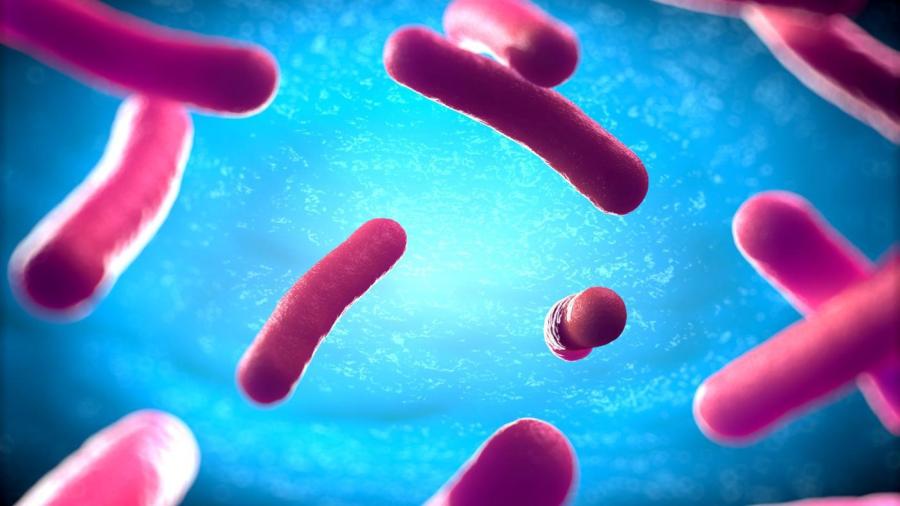How Are Bacteria Different From Animal and Plant Cells?

Plants and animals are multi-cellular organisms composed of eukaryotic cells, while bacteria are single-cell prokaryotic organisms. Each eukaryotic cell of a plant or animal includes a central nucleus containing DNA and membrane-bound organelles, such as endoplasmic reticulum and mitochondria. A bacterial cell has no nucleus or membrane-bound organelles.
The DNA of a eukaryotic cell is linear in structure and contained within the nucleus. Dr. David M. Rollins of the University of Maryland explains that prokaryotes have circular DNA, which is exposed to the cytosol fluid of the cellular environment and concentrates in an area known as the nucleoid. Within the cytosol environment of both eukaryotes and prokaryotes are ribosomes, which are responsible for producing the polypeptide chains of proteins. In bacterial cells, ribosomes are 70s, while eukaryotic plant and animal cells have larger, 80s ribosomes. These 80s ribosomes float within the cytosol of the cell and adhere to the rough endoplasmic reticulum unique to eukaryotes.
Interestingly, the mitochondria of eukaryotes do contain 70s ribosomes within their mitochondria. Dr. Rollins explains that mitochondria are the “power plants” for cellular energy within eukaryotes. Dr. Perry Carter of Midlands Technical College explains that based on this common 70s ribosomal characteristic, some scientists believe that millions of years ago, a prokaryotic bacterium invaded an early-form eukaryotic cell, which gave rise to mitochondria. Bacteria cells divide by way of binary fission and are asexual. Eukaryotes, however, divide cellularly via mitosis and reproduce sexually through the process of meiosis.





